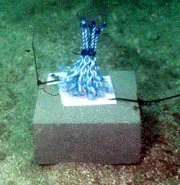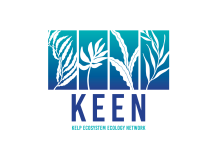COMMUNITY STRUCTURE
Type of resources
Topics
Keywords
Contact for the resource
Provided by
Years
-
The data is the quantitative abundance of megafaunal invertebrates derived from underwater visual census methods involving transect counts at rocky reef sites around Tasmania. This data forms part of a larger dataset that also surveyed fish abundance and algal cover for the area. The aggregated dataset allows examination of changes in Tasmanian shallow reef floral and faunal communities over a decadal scale - initial surveys were conducted in 1992-1995, and again at the same sites in 2006-2007. There are plans for ongoing surveys. An additional component was added in the latter study - a boat ramp study looking at the proximity of boat ramps and their effects of fishing. We analysed underwater visual census data on fishes and macroinvertebrates (abalone and rock lobsters) at 133 shallow rocky reef sites around Tasmania that ranged from 0.6 - 131 km from the nearest boat ramp. These sites were not all the same as those used for the comparison of 1994 and 2006 reef communities. The subset of 133 sites examined in this component consisted of only those sites that were characterized by the two major algal (kelp) types (laminarian or fucoid dominated). Sites with atypical algal assemblages were omitted from the 196 sites surveyed in 2006. This study aimed to examine reef community data for changes at the community level, changes in species richness and introduced species populations, and changes that may have resulted from ocean warming and fishing. The methods are described in detail in Edgar and Barrett (1997). Primarily the data are derived from transects at 5 m depth and/or 10 m depth at each site surveyed. The underwater visual census (UVC) methodology used to survey rocky reef communities was designed to maximise detection of (i) changes in population numbers and size-structure (ii) cascading ecosystem effects associated with disturbances such as fishing, (iii) long term change and variability in reef assemblages.
-
The data is quantitative abundance of fish, megafaunal invertebrates and percent algal cover derived from underwater visual census methods involving transect counts at rocky reef sites around Tasmania. This dataset allows examination of changes in Tasmanian shallow reef faunal and floral communities over a decadal scale, with initial surveys conducted in 1992-1995, and again in 2006-2007. There are plans for ongoing surveys. An additional component was added in the latter study - a boat ramp study looking at the proximity of boat ramps and their effects of fishing. We analysed underwater visual census data on fishes and macroinvertebrates (abalone and rock lobsters) at 133 shallow rocky reef sites around Tasmania that ranged from 0.6 - 131 km from the nearest boat ramp. These sites were not all the same as those used for the comparison of 1994 and 2006 reef communities. The subset of 133 sites examined in this component consisted of only those sites that were characterized by the two major algal (kelp) types (laminarian or fucoid dominated). Sites with atypical algal assemblages were omitted from the 196 sites surveyed in 2006. This study aimed to examine reef community data for changes at the community level, changes in species richness and introduced species populations, and changes that may have resulted from ocean warming and fishing. The methods are described in detail in Edgar and Barrett (1997). Primarily the data are derived from transects at 5 m depth and/or 10 m depth at each site surveyed. The underwater visual census (UVC) methodology used to survey rocky reef communities was designed to maximise detection of (i) changes in population numbers and size-structure (ii) cascading ecosystem effects associated with disturbances such as fishing, (iii) long term change and variability in reef assemblages.
-

Community assembly in macrofauna communities developed in artificial kelp holdfasts was monitored at 1-month intervals over a 13 month period using a sampling design that used systematic patterns of temporal overlap and changes in start and collection dates. The hierarchical nature of the experimental design allowed several different approaches to analysis; by date of deployment and by date of collection of the artificial habitats, which enabled comparison of community assembly with and without the seasonal effects of the date of collection, and by community age to test whether there were alternative end-states to assembly depending on season or recruitment history.
-
The data is the percent algal cover derived from underwater visual census methods involving transect counts at rocky reef sites around Tasmania. This data forms part of a larger dataset that also surveyed fish and megafaunal invertebrate abundance for the area. The aggregated dataset allows examination of changes in Tasmanian shallow reef floral and faunal communities over a decadal scale - initial surveys were conducted in 1992-1995, and again at the same sites in 2006-2007. There are plans for ongoing surveys. An additional component was added in the latter study - a boat ramp study looking at the proximity of boat ramps and their effects of fishing. We analysed underwater visual census data on fishes and macroinvertebrates (abalone and rock lobsters) at 133 shallow rocky reef sites around Tasmania that ranged from 0.6 - 131 km from the nearest boat ramp. These sites were not all the same as those used for the comparison of 1994 and 2006 reef communities. The subset of 133 sites examined in this component consisted of only those sites that were characterized by the two major algal (kelp) types (laminarian or fucoid dominated). Sites with atypical algal assemblages were omitted from the 196 sites surveyed in 2006. This study aimed to examine reef community data for changes at the community level, changes in species richness and introduced species populations, and changes that may have resulted from ocean warming and fishing. The methods are described in detail in Edgar and Barrett (1997). Primarily the data are derived from transects at 5 m depth and/or 10 m depth at each site surveyed. The underwater visual census (UVC) methodology used to survey rocky reef communities was designed to maximise detection of (i) changes in population numbers and size-structure (ii) cascading ecosystem effects associated with disturbances such as fishing, (iii) long term change and variability in reef assemblages.
-
Data is PCR amplification results of southern rock lobster (Jasus edwardsii) faecal material tested for sea urchin DNA (using unique primers for Centrostephanus rodgersii and Heliocidaris erythrogramma) in an attempt to determine in situ rates of consumption of sea urchins by lobsters. An efficient and non-lethal method was used to source and screen lobster faecal samples for the presence of DNA from ecologically important sea urchins. Lobster faecal samples were collected from trap caught specimens sourced in winter & summer seasons over 2 years (2009-2011) within two no-take research reserves; declared specifically for the purpose of rebuilding large predatory-capable lobsters to assess the potential for predator-driven remediation of kelp beds on rocky reefs extensively overgrazed by sea urchins (North Eastern Tasmania) and reefs showing initial signs of overgrazing (South Eastern Tasmania). Data for molecular assays showed high variability in the proportion of lobsters testing positive to sea urchins, with significant variability detected across different years and seasons but this was found to vary depending on different lobster size-classes. Sea urchin DNA was also amplifiable from sediments and urchin faeces collected from the reef surface where urchins occurred in high abundance. Furthermore, positive sea urchin DNA assays were obtainable from lobster faeces after lobsteres were fed sediment and urchin faecal material. Rates of predation obtained with genetics tests can also be compared to independent rates of urchin losses given known lobster abundances within research reserves (and at control sites). Data of changes in urchin abundances and lobster abundances are therefore also lodged as part of this record.
-
Quantitative surveys were undertaken at four sites in the Kent Group, north eastern Tasmania (southern and northern shores of East Cove at Deal Island, Winter Cove at Deal Island, NE coast of Dover Island) by divers using underwater visual census methods to survey the reef habitat.
-

This global meta-analysis documents data from underwater visual surveys used to determine the effect of kelp bed disturbance and canopy density on the abundance and structure of fish communities. Spatial, temporal and ontogenetic variability of many key fish species was examined at various levels of kelp disturbance at sites spanning a global temperate distribution. Rocky reef habitats and fisheries management regimes of sites were also examined as covariates. This data spans from 1984 to present. Note that Emma has completely fabricated this abstract, and requires direct input from KEEN.
-
The long spined sea urchin Centrostephanus rodgersii (Diadematidae) has recently undergone poleward range expansion to eastern Tasmania (southeast Australia). This species is associated with barrens habitat which has been grazed free of macroalgae, and therefore has potentially important consequences for reef structure and biodiversity. This study used urchin removal experiments from barrens patches in eastern Tasmania to monitor the subsequent response of the macroalgae relative to unmanipulated barrens patches. In removal patches, there was a rapid proliferation of canopy-forming macroalgae (Ecklonia radiata and Phyllospora comosa), and within 24 months the algae community structure had converged with that of nearby areas without urchins. Faunal species richness was comparatively low in barrens habitat, with C. rodgersii grazing activity resulting in an estimated minimum net loss of approximately 150 taxa compared with intact macroalgal habitats.
-
Belt transect surveys (50m) were used to monitor the benthic community structure through time at experimental (lobster additions/ research reserve sites or abalone diver urchin culls) and control sites in eastern Tasmania. Measures of percentage cover of key algal guilds, percentage of reef grazed by sea urchins, number of sea urchins (Centrostephanus rodgersii, Heliocidaris erythrogramma), Abalone (Haliotis Rubra), Rock lobsters (Jasus edwardsii) and type of substratum were recorded.
 TemperateReefBase Geonetwork Catalogue
TemperateReefBase Geonetwork Catalogue